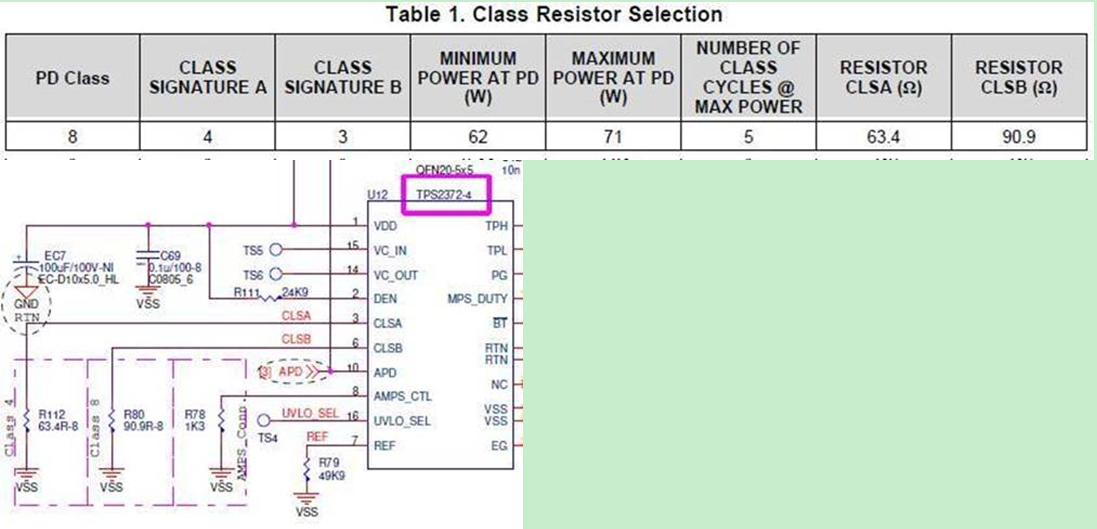Dear Sir/Ms.
My customer asked questions about the application scenario, and I was not so clear. I want to ask you some advice.
Regarding Pin16 / IRSHDL_EN: Enable the PSE influx delay (about 81.5 milliseconds). May I ask Disable&Enable. Will this delay be considered in some cases?
(Is there a practical example for this requirement? Or can it replace the description, thank you)
a). Is the "surge limiting function" of the IC a mechanism to avoid excessive Inrush current when the internal MOSFET is turned on?
b). May I ask if the Inrush current of the product is too large and the time is too long to exceed the basic specifications and cause Inrush to detect Fail, can the inrush delay mechanism be activated to try to improve the problem?
If the current class settings of TPS2372-4 are as follows, what is the difference between turning off Autoclass and turning on Autoclass when connecting to the three specifications of PSE (PoE / PoE + / PoE ++)?
Best Regards,
Kami Huang


